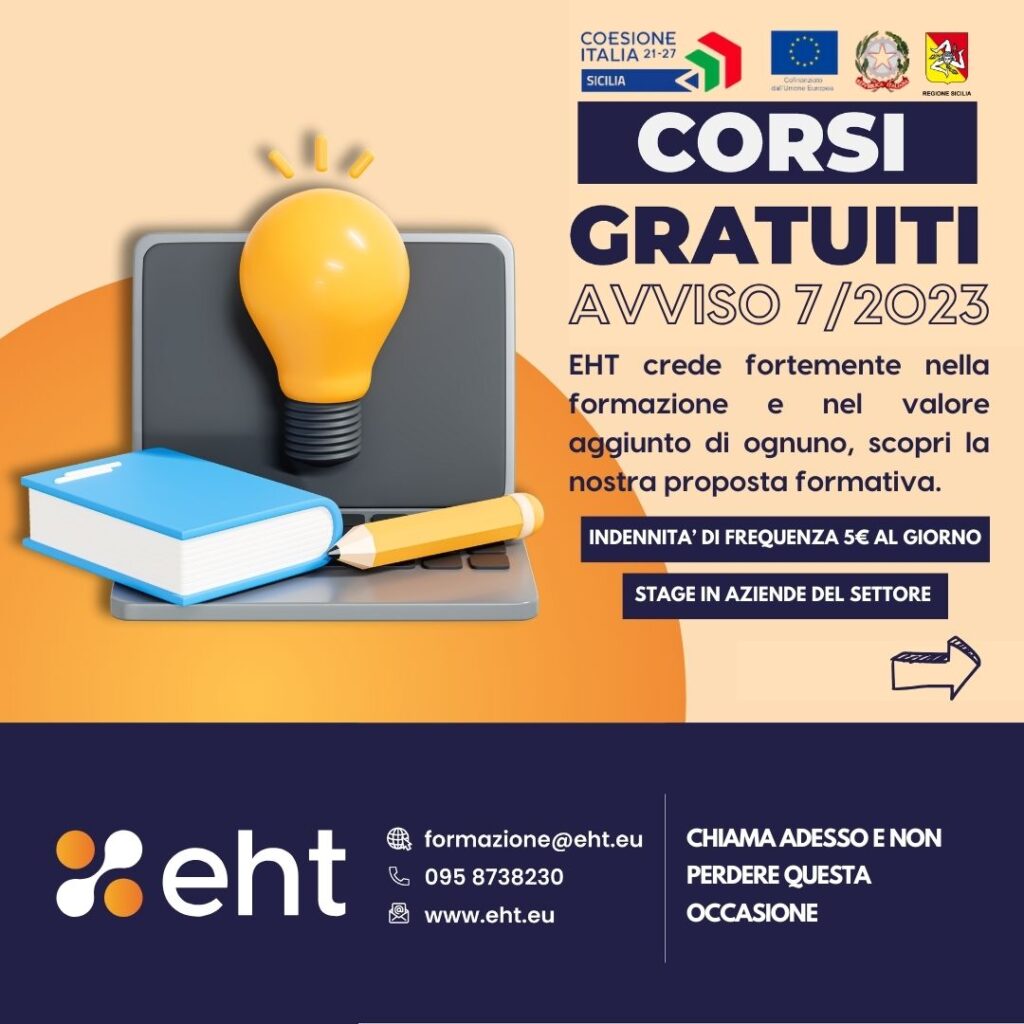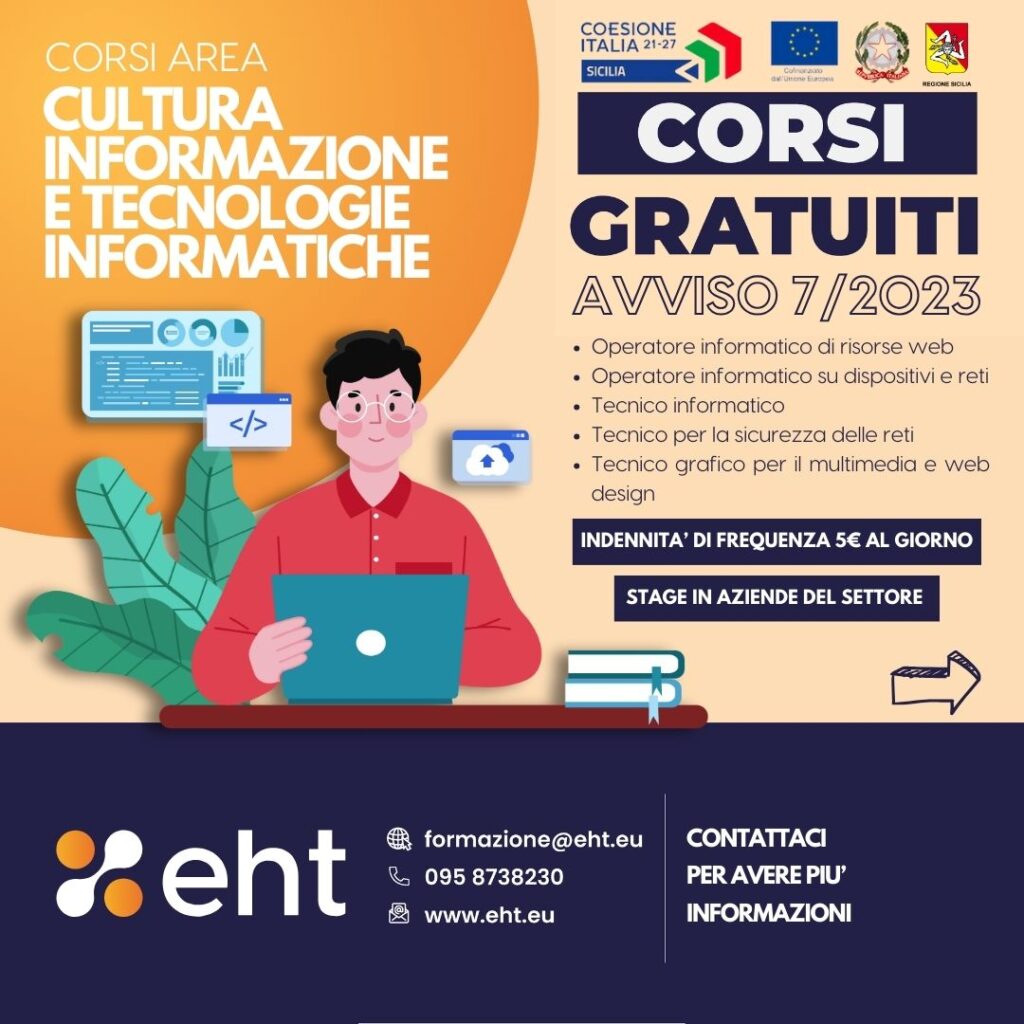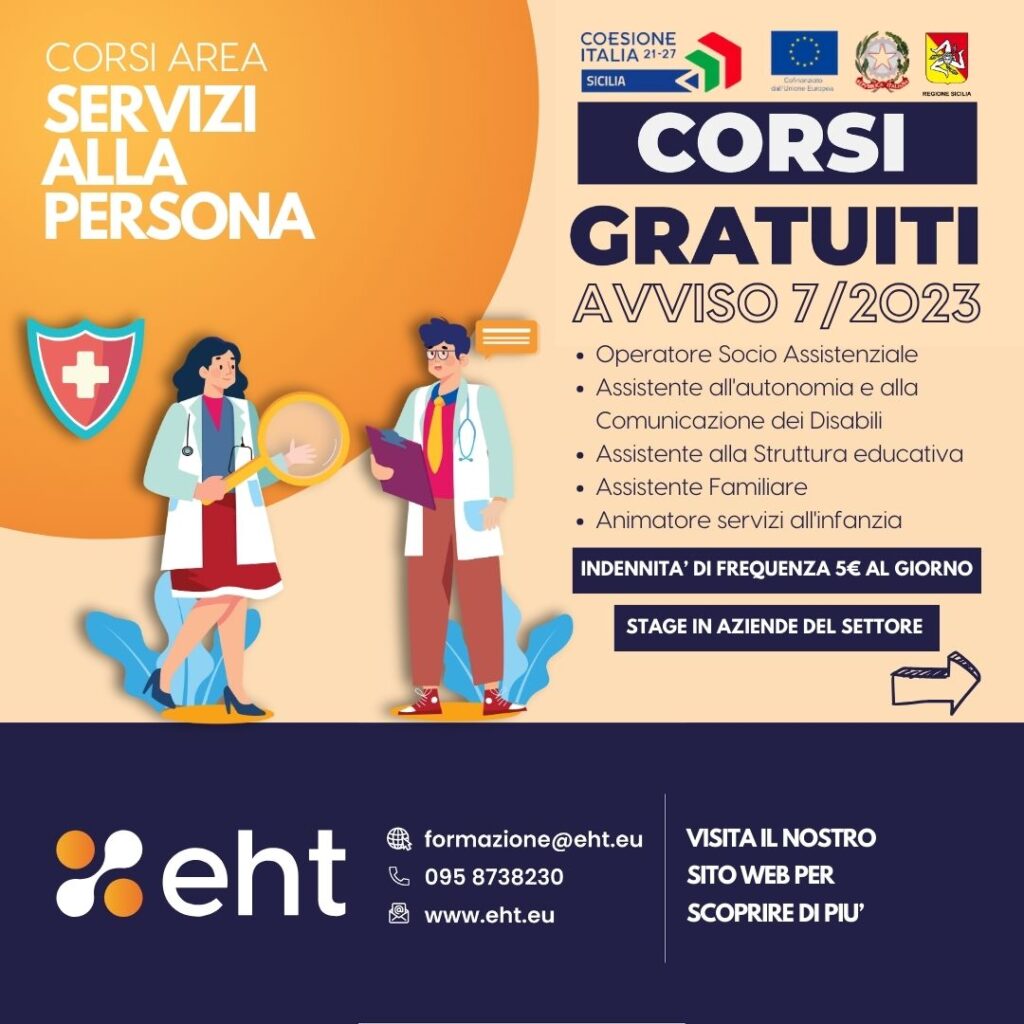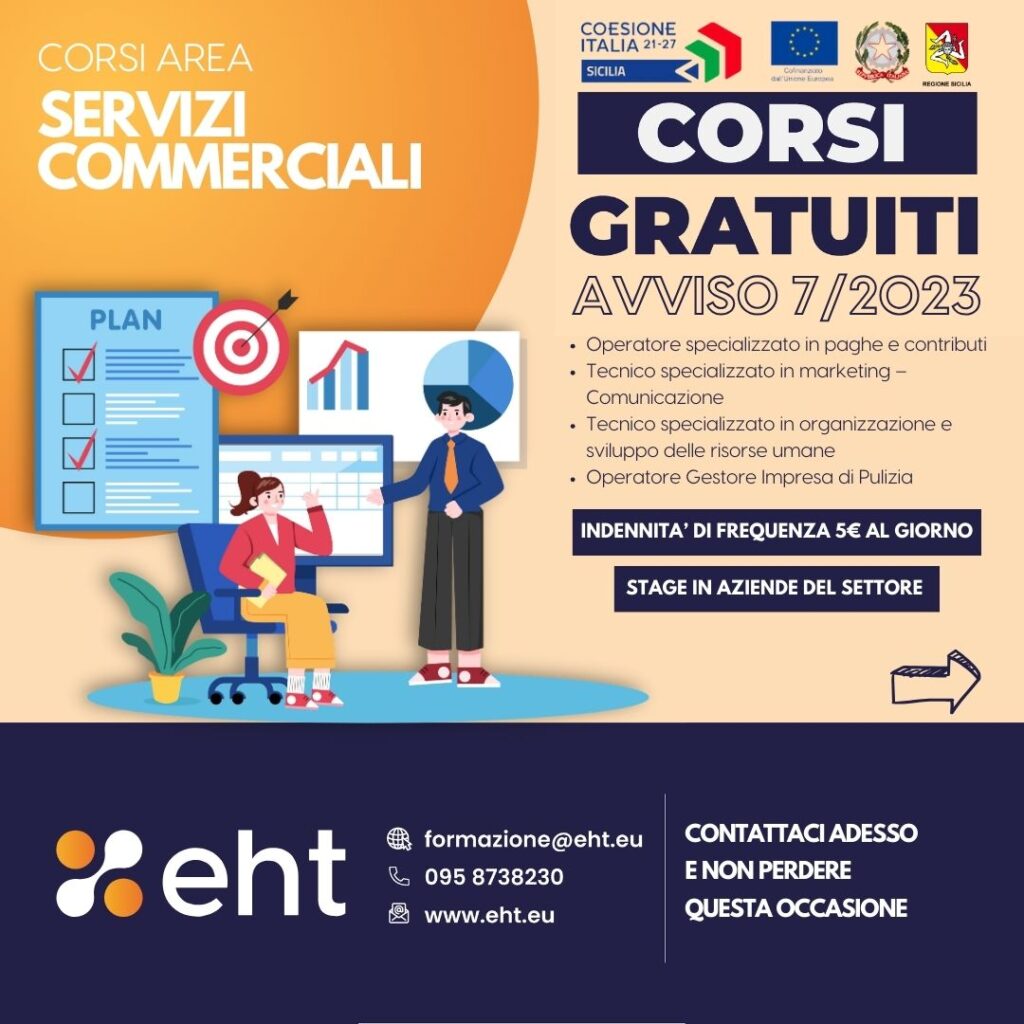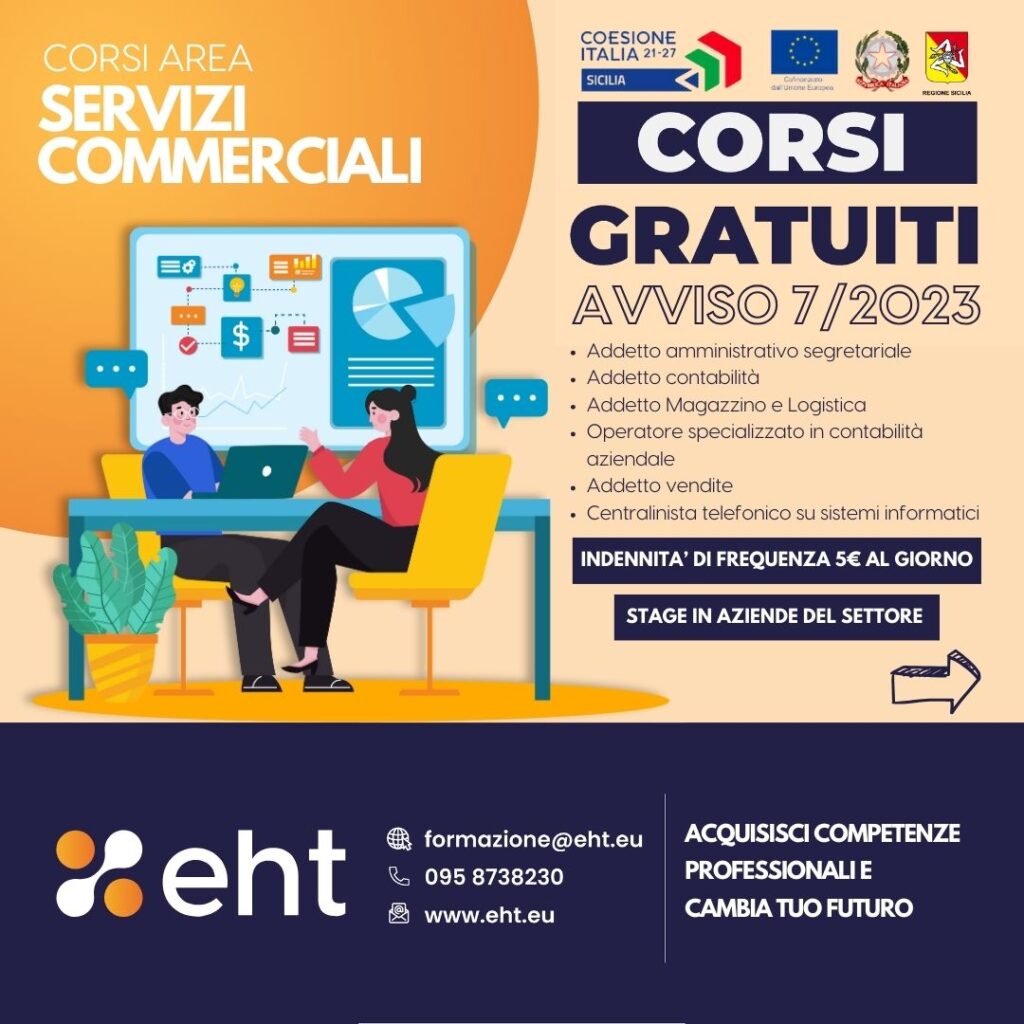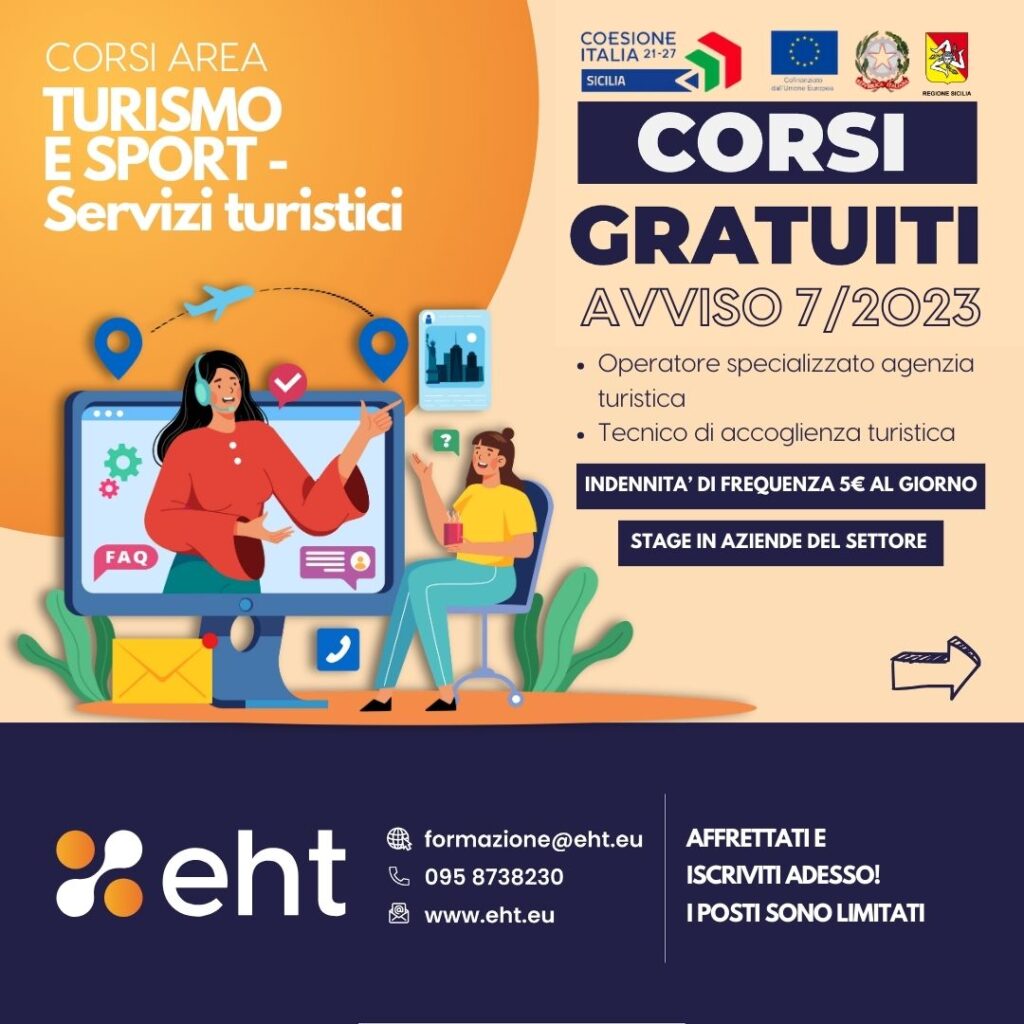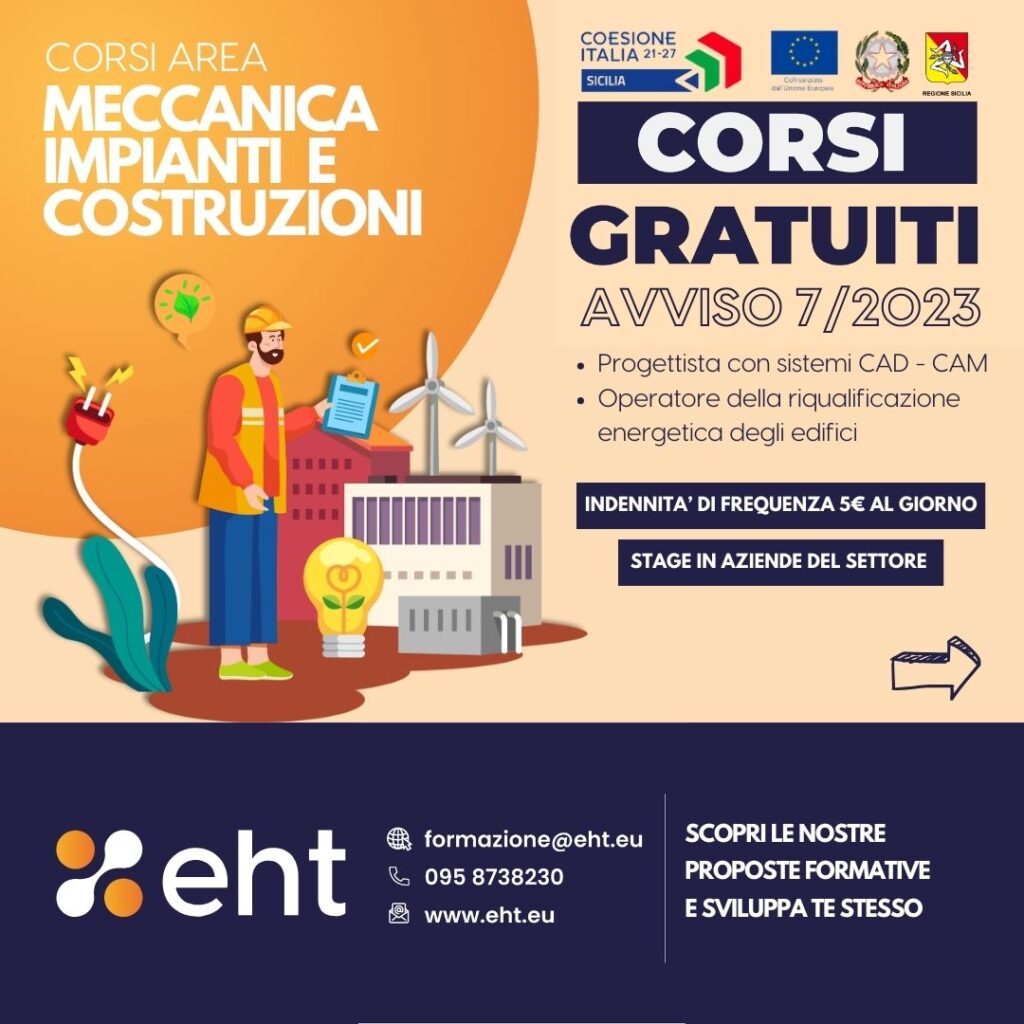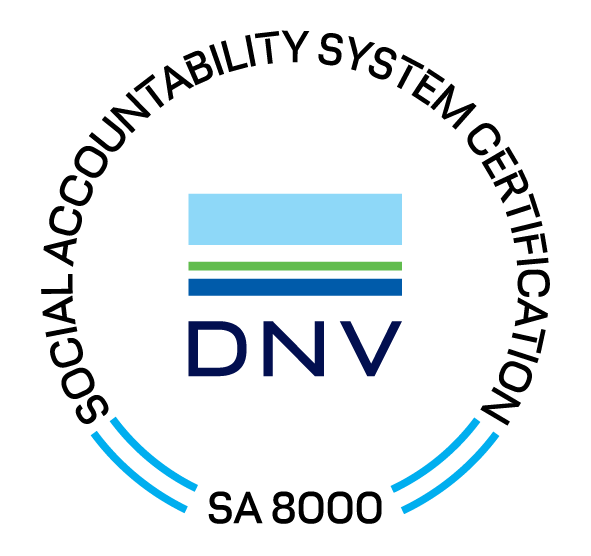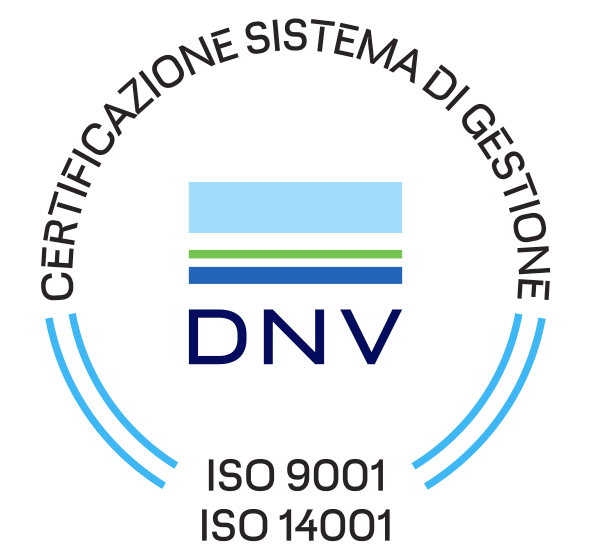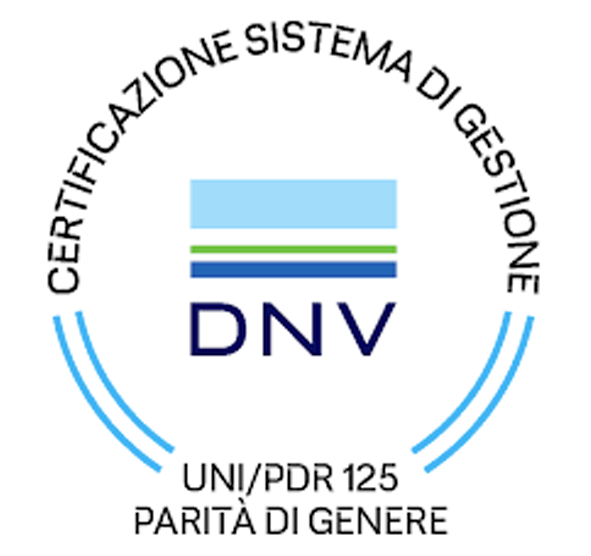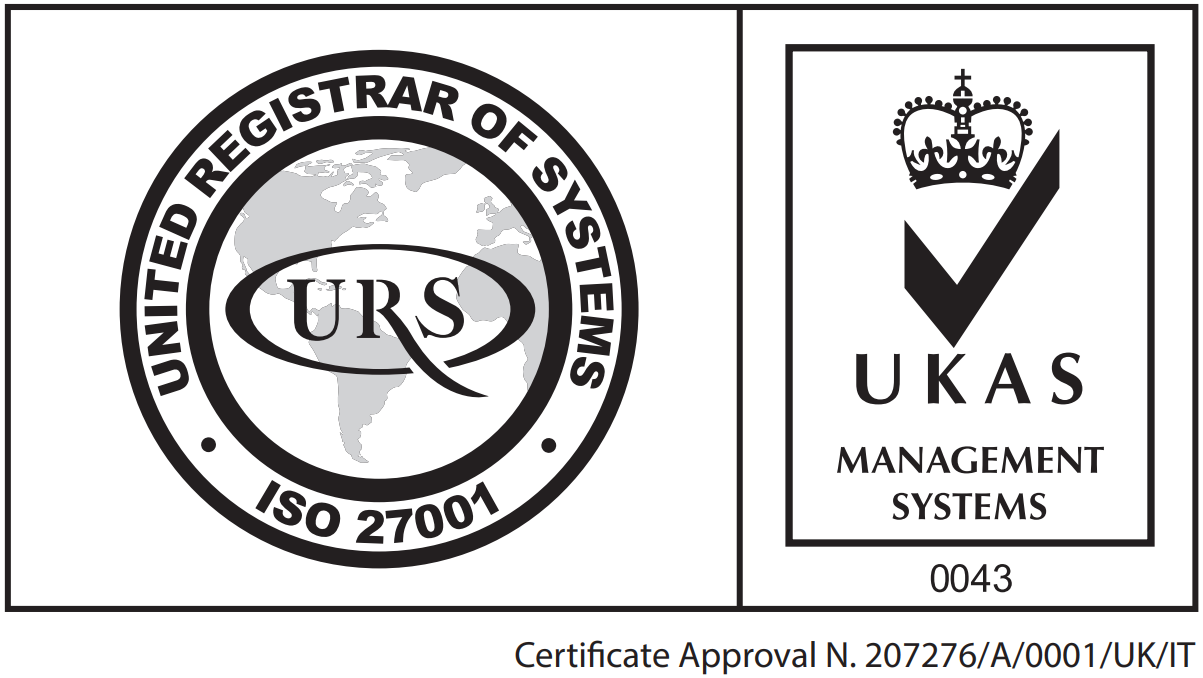COSTITUZIONE CATALOGO REGIONALE DELL’OFFERTA FORMATIVA E CORRELATA REALIZZAZIONE DI PERCORSI FORMATIVI DI QUALIFICAZIONE MIRATI AL RAFFORZAMENTO DELL’OCCUPABILITÀ IN SICILIA
Bando Selezione Allievi
Corsi di Formazione Professionale e stage in azienda
- essere persone non occupate, pertanto disoccupati, inoccupati e inattivi
- essere residenti o domiciliati in Sicilia
- essere in età lavorativa
- i destinatari minorenni devono avere assolto il previsto obbligo di istruzione
- avere il titolo di studio minimo richiesto per la tipologia di percorso formativo da attivare, come stabilito nelle schede corso disponibili nel Repertorio delle qualificazioni
PARTECIPAZIONE: Gratuita – INDENNITA’ DI FREQUENZA: 5,00 € (cinque/00) lordi al giorno
COME ISCRIVERSI: Per l’iscrizione occorre allegare alla domanda i seguenti documenti:
- allegato 3 Modulo iscrizione
- informativa privacy;
- copia di un documento di riconoscimento in corso di validità
- copia del codice fiscale
- dichiarazione di Immediata Disponibilità al lavoro (DID) rilasciata dal Centro per l’Impiego
- copia del titolo di studio o dichiarazione di equipollenza
Le iscrizioni si accetteranno fino ad esaurimento dei posti disponibili.
SEDE DI SVOLGIMENTO: Le attività di formazione in aula e gli esami finali si svolgeranno presso la nostra sede didattica, mentre le ore di stage si svolgeranno presso le strutture convenzionate.
CERTIFICAZIONE: Al termine del corso, previo superamento dell’esame finale, il partecipante conseguirà l’Attestato di Qualifica / Specializzazione Professionale, valido giuridicamente su tutto il territorio nazionale.
INFORMAZIONI: Per qualsiasi richiesta relativa al corso puoi scriverci a: formazione@eht.eu o contattaci allo 095-8738230
Percorsi disponibili:
| SERVIZI COMMERCIALI |
|---|
| Addetto amministrativo segretariale |
| Addetto contabilità |
| Addetto Magazzino e Logistica |
| Operatore specializzato in contabilità aziendale |
| Addetto vendite |
| Centralinista telefonico su sistemi informatici |
| Operatore specializzato in paghe e contributi |
| Tecnico specializzato in marketing – Comunicazione |
| Tecnico specializzato in organizzazione e sviluppo delle risorse umane |
| Operatore Gestore Impresa di Pulizia |
| SERVIZI ALLA PERSONA |
| Operatore Socio Assistenziale |
| Assistente all’autonomia e alla Comunicazione dei Disabili |
| Assitente alla Struttura educativa |
| Assitente Familiare |
| Animatore servizi all’infanzia |
| CULTURA INFORMAZIONE E TECNOLOGIE INFORMATICHE |
| Operatore informatico di risorse web |
| Operatore informatico su dispositivi e reti |
| Tecnico informatico |
| Tecnico per la sicurezza delle reti |
| Tecnico grafico per il multimedia e web design |
| TURISMO E SPORT – Servizi turistici |
| Operatore specializzato agenzia turistica |
| Tecnico di accoglienza turistica |
| AGRO ALIMENTARE |
| Addetto alla sistemazione e manutenzione aree verdi |
| Conduttore impresa agricola |
| MECCANICA IMPIANTI E COSTRUZIONI |
| Progettista con sistemi CAD – CAM |
| Operatore della riqualificazione energetica degli edifici |
Proposta percorsi formativi: area Servizi commerciali
| Percorsi formativi | EQF | Totale ore |
|---|---|---|
| Addetto amministrativo segretariale | EQF2 | 654 |
| Addetto contabilità | EQF2 | 654 |
| Addetto Magazzino e Logistica | EQF2 | 554 |
| Operatore specializzato in contabilità aziendale | EQF4 | 654 |
| Addetto vendite | EQF2 | 554 |
| Centralinista telefonico su sistemi informatici | EQF3 | 954 |
| Operatore specializzato in paghe e contributi | EQF4 | 594 |
| Tecnico specializzato in marketing – Comunicazione | EQF5 | 812 |
| Tecnico specializzato in organizzazione e sviluppo delle risorse umane | EQF5 | 854 |
| Operatore Gestore Impresa di Pulizia | EQF3 | 454 |
Proposta percorsi formativi: area Servizi alla persona
| Percorsi formativi | EQF | Totale ore |
|---|---|---|
| Operatore Socio Assistenziale | EQF3 | 754 |
| Assistente all’autonomia e alla Comunicazione dei Disabili | EQF4 | 954 |
| Assitente alla Struttura educativa | EQF2 | 304 |
| Assitente Familiare | EQF2 | 354 |
| Animatore servizi all’infanzia | EQF3 | 854 |
Proposta percorsi formativi: area Turismo e sport
| Percorsi formativi | EQF | Totale ore |
|---|---|---|
| Operatore specializzato agenzia turistica | EQF4 | 654 |
| Tecnico di accoglienza turistica | EQF5 | 612 |
Proposta percorsi formativi: area Cultura informazione e tecnologie informatiche
| Percorsi formativi | EQF | Totale ore |
|---|---|---|
| Operatore informatico di risorse web | EQF3 | 554 |
| Operatore informatico su dispositivi e reti | EQF3 | 554 |
| Tecnico informatico | EQF5 | 612 |
| Tecnico per la sicurezza delle reti | EQF5 | 654 |
| Tecnico grafico per il multimedia e web design | EQF5 | 642 |
Proposta percorsi formativi: area Agro-alimentare
| Percorsi formativi | EQF | Totale ore |
|---|---|---|
| Addetto alla sistemazione e manutenzione aree verdi | EQF2 | 554 |
| Conduttore impresa agricola | EQF3 | 454 |
Proposta percorsi formativi: area Meccanica impianti e costruzioni
| Percorsi formativi | EQF | Totale ore |
|---|---|---|
| Progettista con sistemi CAD – CAM | EQF5 | 1054 |
| Operatore della riqualificazione energetica degli edifici | EQF3 | 654 |
- Gratuito
- Indennità di frequenza: €5,00 al giorno
- Ultimi posti disponibili
Richiedi info

